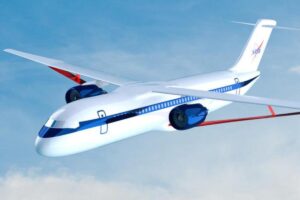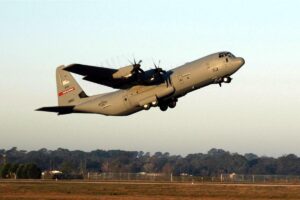MIL-STD-461: Electromagnetic Compatibility in Avionics
Introduction
In the ever-evolving landscape of aerospace and defense technology, electromagnetic compatibility (EMC) is a non-negotiable requirement. Modern avionics systems are increasingly complex, often integrating sophisticated electronic components with critical communication, navigation, and control systems. Ensuring these systems can operate without electromagnetic interference (EMI) is essential for safety, reliability, and mission success. MIL-STD-461 is a cornerstone standard developed by the U.S. Department of Defense (DoD) to address EMC in military equipment, including avionics.
This white paper explores MIL-STD-461 in depth, examining its history, structure, testing methods, and its pivotal role in achieving EMC for avionics systems. We will also discuss its implications for equipment design, certification, and integration within aerospace platforms.
Electromagnetic compatibility refers to a system’s ability to operate in its electromagnetic environment without causing or experiencing interference. In avionics, EMC is critical because numerous systems must function simultaneously in a confined space—each potentially emitting or being susceptible to electromagnetic energy.
1.1. EMI vs EMC Electromagnetic interference (EMI) is the unwanted disruption caused by electromagnetic emissions. EMC encompasses the broader framework that includes controlling EMI, ensuring emissions do not exceed limits, and ensuring immunity to interference.
1.2. Sources of EMI in Avionics Common sources include:
- Power supplies
- Switching regulators
- Communication transmitters
- Radar systems
- Digital circuits and processors
Each can disrupt system functionality if not properly mitigated.
MIL-STD-461 was first issued in 1967 as part of the DoD’s efforts to standardize EMC requirements. Over the decades, it has undergone multiple revisions to accommodate technological advancements.
2.1. Timeline of Key Revisions
- MIL-STD-461A (1967): Initial release
- MIL-STD-461B/C (1976): Updated test methods and procedures
- MIL-STD-461D/E (1993/1999): Harmonization with MIL-STD-462
- MIL-STD-461F (2007): Simplified and clarified procedures
- MIL-STD-461G (2015): Current version with refined requirements
2.2. Integration with MIL-STD-462 Originally, MIL-STD-461 defined requirements, while MIL-STD-462 defined test procedures. In MIL-STD-461E and later, these were merged to streamline compliance.
MIL-STD-461 applies to equipment and subsystems used in military environments, including aircraft, ships, ground vehicles, and space systems. It does not directly apply to complete platforms but focuses on the individual electronic and electrical components.
3.1. Equipment Categories
- Ground: Army vehicles, support systems
- Airborne: Aircraft avionics, unmanned aerial systems (UAS)
- Shipboard: Naval electronic systems
- Space: Satellite and spacecraft components
3.2. Tailoring EMC Requirements Programs may tailor MIL-STD-461 to suit specific platform needs, mission profiles, or environmental constraints.
MIL-STD-461G is organized into several sections that specify test limits, procedures, and documentation requirements.
4.1. Document Organization
- Section 1: Scope
- Section 2: Applicable documents
- Section 3: Definitions
- Section 4: General requirements
- Section 5: Detailed test methods
- Appendices: Supplemental guidance
4.2. Test Methods MIL-STD-461G outlines more than 20 test methods, each designated by a two-letter code (e.g., CE, CS, RE, RS):
- CE: Conducted Emissions
- CS: Conducted Susceptibility
- RE: Radiated Emissions
- RS: Radiated Susceptibility
Each method addresses specific frequency ranges and coupling mechanisms.
The following test methods are most relevant to avionics systems:
5.1. CE101 / CE102 Measure conducted emissions on power leads. CE101 focuses on low frequencies (30 Hz – 10 kHz), while CE102 covers 10 kHz – 10 MHz.
5.2. CS101 / CS114 / CS115 / CS116 Assess susceptibility to conducted signals. CS114 evaluates RF-induced currents; CS115 and CS116 focus on impulse and damped sinusoidal transients.
5.3. RE101 / RE102 Evaluate radiated emissions in the 30 Hz – 18 GHz range. RE102 is critical for detecting emissions that might interfere with co-located equipment.
5.4. RS101 / RS103 Determine susceptibility to radiated fields. RS103 assesses immunity to strong RF fields up to 18 GHz.
Proper test setup is essential for repeatability and accuracy.
6.1. Test Environment Testing is performed in shielded enclosures, anechoic chambers, or open-area test sites depending on the method.
6.2. Equipment Under Test (EUT) The EUT must be configured in its normal operating mode with representative cabling and loads.
6.3. Calibration and Verification Calibration of antennas, sensors, and current probes ensures data validity. Verification tests precede formal testing.
6.4. Data Reporting MIL-STD-461G mandates detailed data logging, including setup photos, calibration records, test results, and deviations.
Achieving EMC starts early in design.
7.1. Shielding Proper shielding of cables and enclosures prevents emission leakage and improves immunity.
7.2. Filtering Line filters and EMI suppression components reduce conducted emissions and susceptibility.
7.3. Grounding and Bonding Low-impedance paths to ground minimize noise. Attention to ground loops is critical.
7.4. PCB Layout Component placement, trace routing, and return path design impact EMI performance.
7.5. Component Selection Use of radiation-hardened or EMI-resistant components enhances robustness.
Modern avionics systems pose unique EMC challenges:
8.1. Size, Weight, and Power (SWaP) Compact systems intensify EMI issues due to proximity and shared grounds.
8.2. Mixed-Signal Architectures Analog and digital co-existence increases susceptibility to cross-domain interference.
8.3. High-Speed Digital Interfaces Interfaces like ARINC 429, Ethernet, and MIL-STD-1553 operate at frequencies that can radiate significant EMI.
8.4. Platform Integration Avionics must coexist with propulsion, radar, and weapons systems that produce high EMI levels.
Certification is essential for fielding avionics equipment in military platforms.
9.1. Developmental Testing Performed during design to identify and correct EMC issues early.
9.2. Qualification Testing Formal testing to demonstrate compliance with MIL-STD-461. Often witnessed by government or third-party assessors.
9.3. Test Reports and Documentation Includes test plans, procedures, raw data, analysis, and conclusions. Critical for certification.
9.4. Configuration Control Maintains consistency in tested configurations across production.
MIL-STD-461 aligns with or complements several other standards:
10.1. RTCA DO-160 Civil aviation standard for environmental testing, including EMI. MIL-STD-461 is often more stringent.
10.2. ISO and IEC Standards IEC 61000 series addresses EMC in commercial electronics. Some elements are harmonized with MIL-STD-461.
10.3. NATO STANAGs Standardization agreements within NATO often reference MIL-STD-461.
10.4. MIL-HDBK-237 Provides guidance for applying MIL-STD-461 during acquisition.
EMC considerations span the entire lifecycle:
11.1. Concept and Requirements Phase Define EMC constraints and test criteria early.
11.2. Design and Development Perform simulations and pre-compliance testing.
11.3. Production and Integration Ensure manufacturing processes preserve EMC integrity.
11.4. Sustainment and Upgrades Any hardware or software changes must be re-evaluated for EMC compliance.
12.1. Increasing Frequencies 5G, satellite comms, and millimeter-wave radar systems push EMC requirements into higher frequencies.
12.2. Digital Transformation Software-defined systems, artificial intelligence, and advanced signal processing introduce new interference paths.
12.3. Autonomous and Electric Aircraft EMC challenges expand with distributed electric propulsion and sensor fusion architectures.
12.4. Cyber-EM Convergence Intersection of EMC and cybersecurity highlights the need for resilient, interference-resistant architectures.
MIL-STD-461 remains a foundational standard for achieving EMC in military avionics. By defining robust test procedures and compliance criteria, it ensures that complex electronic systems can coexist without interference, preserving operational integrity and safety. As aerospace technology evolves, so too must EMC practices and standards. Understanding and applying MIL-STD-461 effectively is essential for any organization developing avionics systems for defense platforms.





